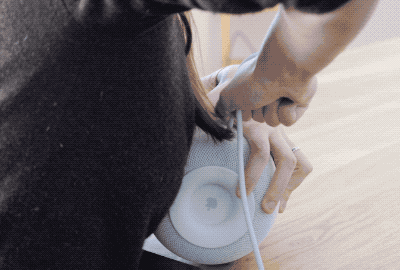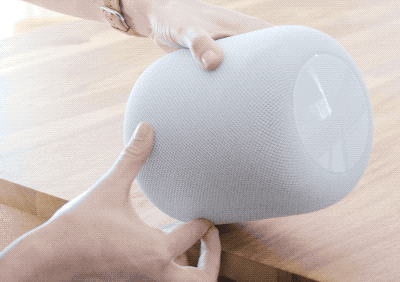Yes, you can pull the power cable out of a HomePod… but should you?

Apple's HomePod is, like many of its more recent products, almost impossible to take apart without power tools or executive knowhow. But there is one moving piece.
The new-and-improved fabric power cable may not have the same connector as its Apple TV or iMac brethren, but it is removable — though it requires a hefty yank to make that happen (and an equally hefty shove against a table to get it back in place).
But unlike Apple's other products, the HomePod's removable cable isn't something you should consider doing regularly. According to Apple's HomePod Service Readiness guide (which MacRumors obtained):
The HomePod includes a built-in power cable that should not be removed.In the rare instance that the cable is detached or damaged, do not attempt to remove or plug it back into HomePod. If the cable is removed or impaired, damage could have occurred to the cable or the internal components of HomePod.
If Apple doesn't want its own in-store employees to fix HomePod cables (instead opting to send all HomePod repairs straight to centralized depots), you might want to think twice about removing yours.
The danger of yanking on what we don't understand
Apple presumably doesn't wish for users or store Geniuses to yank on the cable for two reasons: Potential damage to the cable itself, or the very small, very fragile power prongs inside the speaker.
Damage to either one could provoke random shutdowns, potentially poor electrical seals, and a number of other issues — none of which any HomePod user may want to risk.

Having removed and reconnected the power cable on Rene's HomePod multiple times, the process isn't particularly complicated: A small plastic ring on the power cable snaps into place inside the HomePod's chassis; to remove the cable, you have to pull the cord with enough force to compress the ring.
Master your iPhone in minutes
iMore offers spot-on advice and guidance from our team of experts, with decades of Apple device experience to lean on. Learn more with iMore!
But that force requires a not-insignificant tug — I consider myself fairly strong, and it took me winding the cable around my fist and a few strong wiggles and yanks to remove the cord.
Putting it in is an even more laborious task, because you need enough pressure to snap the plastic ring back in place.
Note: You also need to make sure you've aligned the cord properly, though the cable connector is smart enough to be slanted, so improper fittings won't sit flush against the speaker.
I eventually resorted to using a table edge to snap the cord back into place, though it made me cringe every time.

Right to repair is meaningless without HomePod parts
There are perfectly legitimate reasons for wanting to know how to remove pieces of the HomePod: It'd certainly be easier to feed the smaller, removed end of the cord through an entertainment system, for one. There's also a growing argument on Right to Repair for electronic devices, which argues that consumers will frequently throw away old products that aren't accessible rather than attempt to fix them.
I'm not against right to repair, though there's not much you'll be able to do with the HomePod at present (everything besides the cable is sealed with glue and invisible screws). But just because the power cord is removable doesn't mean it's fixable — without a third-party replacement part (or official replacement parts from Apple), removing the power cord does little more than provide a fun showcase of strength at a party.
In the future, if Apple provides replacement parts, this might be a different story. And the argument on whether they should provide replacement parts is a worthy one.
But at the end of the day, I'm not going to advise people learn how to yank out their power cords in the hope that maybe Apple will provide replacement cords — and in the meantime, possibly damage their far-harder-to-repair internals.
Yank at your own risk
Whether you want to remove the cable to thread it through your entertainment system, or you're just curious how Apple's new plug works, it is doable — but be careful. If you damage the internal prongs or the cable itself in the process, you'll be paying some sort of sum to put everything back together again. If you've damaged the cable, it's just $29 to replace it (whether or not you have AppleCare+), but damaging the internals could run you up a much pricier repair — $39 if you have AppleCare+, $279 if you don't.
Updated February 13, 2018: Corrected AppleCare+ numbers.
Serenity was formerly the Managing Editor at iMore, and now works for Apple. She's been talking, writing about, and tinkering with Apple products since she was old enough to double-click. In her spare time, she sketches, sings, and in her secret superhero life, plays roller derby. Follow her on Twitter @settern.

